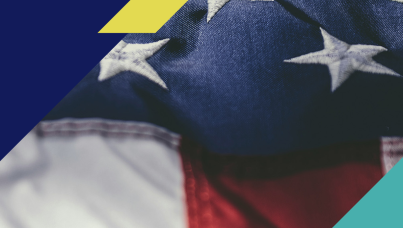Why are Americans still so pessimistic about the economy?
Unemployment nearing the lowest it’s been in the past decade. Inflation, which has ravaged the nation over the past few years, is cooling. The S&P 500 has continued climbing despite predictions of a recession.
So, why doesn’t consumer confidence reflect the increasingly positive economic indicators?
There are a few potential explanations. Consumer confidence can be a lagging indicator of the economy, suggesting a rise of consumer confidence might just be stuck in traffic. We also find that the effects of inflation, a pandemic, and general economic uncertainty are still lingering, even if numeric indicators are down. And partisan-tinted lenses are coloring how Americans view the economy.
Below are five charts on the economy, how Americans feel, and what a lagging economy might mean come November.
- A confusing picture. Unemployment and inflation are down. Typically, this would suggest that the economy is doing well. But the LSEG/Ipsos consumer confidence index looks pretty lukewarm compared to the late 2010s, when unemployment and inflation were roughly in the same position.
- Everything costs more. Yes, inflation has slowed down. But Americans are now more likely to feel that prices are higher than where they were a year ago, even with inflation cooling. How long until consumers to adjust to these new prices? We will see.
- Americans aren’t getting ahead. Right now, perceptions of the economy aren’t lining up with reality. Perhaps driving this sentiment is the feeling that nobody’s getting ahead. Just one in five feel that they themselves have been able to get ahead over the past two years, while just 5% feel that most Americans have done more than barely keep up. The pandemic, inflation, high interest rates, and general economic uncertainty kicked Americans down; few have been able to get back up.
- Political skew. Consumer confidence is, in some ways, a partisan metric. That seems to be one explanation as to why consumer confidence is lukewarm now. Democrats see an improving economy, while Republicans see one that’s still struggling. Two Americas; one red, one blue.
- Presidential consequences. When it comes to the main issue, our rule of thumb is that the candidate that dominates the main issue wins an election 85% of the time. Biden, who has long suffered from poor messaging on the economy, is seen as weaker on the economy.
There are other factors that might be contributing to the negative economic sentiment. Consumer confidence is typically a lagging indicator of the economy. Distrust of the government may be keeping Americans’ expectations in the gutter. Negative economic news coverage may also be partly to blame.
That said, consumer sentiment around the economy will be worth watching heading into the 2024 election. If Americans respond well to the improving economic signals, Biden’s chances at reelection will benefit. But if Americans remain pessimistic, the scales lean Trump. Watch this space.



